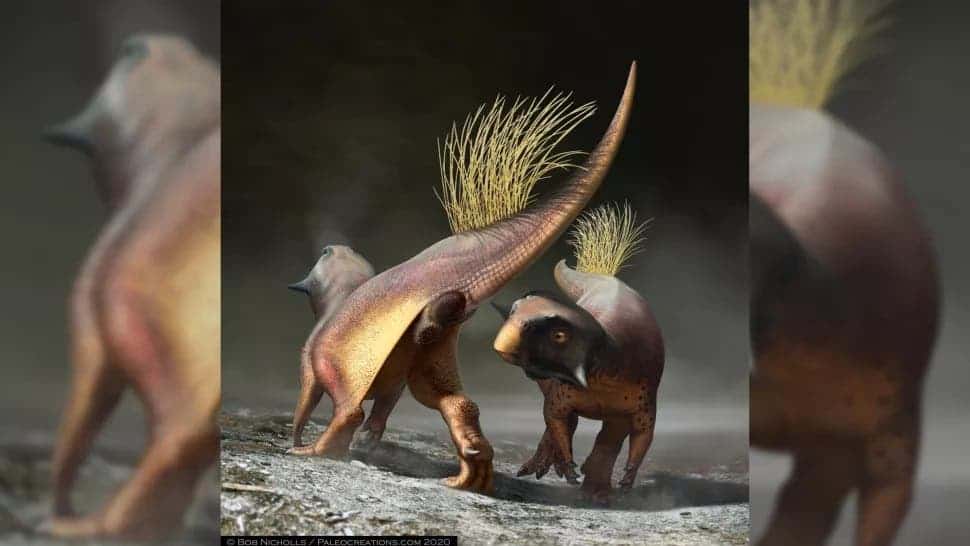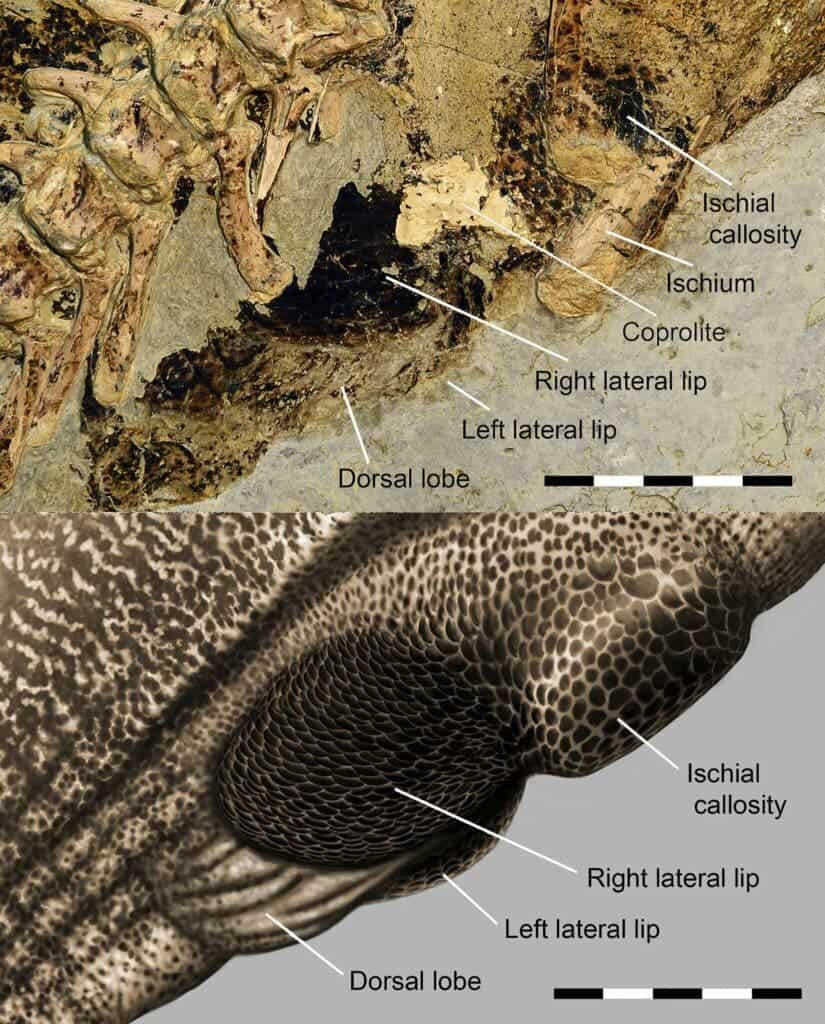
It’s amazing how much scientists have been able to learn about the secret lives of dinosaurs, creatures that went extinct more than 65 million years ago, just by studying their fossilized remains. Obviously, there are still a lot of loose ends owed to incomplete fossil records and due to the fact that many anatomical features rarely, if not never, fossilize. This is why scientists are excited about the first truly preserved dinosaur cloacal vent, the scientific name for the terminal end of the gastrointestinal tract in birds and amphibians, aka the butthole.
But this isn’t a butthole like any other. Speaking to Live Science, Jakob Vinther, a paleontologist at the University of Bristol in the United Kingdom, said that the dinosaur cloaca he studied isn’t like that of birds. It more closely resembles that of crocodiles, with two small bulges in proximity to the cloaca which might have had musky scent glands with a possible role in courtship. However, in many respects, the dinosaur cloaca was quite unique.
The oldest cloaca in the world was found sitting in a fossil display case in the Senckenberg Natural History Museum in Frankfurt, Germany, and belonged to a beaked, dog-sized dinosaur called Psittacosaurus.
A cloaca isn’t your typical butthole. It serves as an anus, in that it is the orifice through which waste ultimately exits the body after its journey through the intestinal tract. But the orifice, whose name comes from the Latin word for ‘sewer’, also plays a role in copulation and the extrusion of offspring or eggs.
The fossilized orifice was flattened over millions of years until it was unearthed from a basin in China decades ago. While working on a different study, Vinther was shocked to find that Psittacosaurus‘ posterior was intact after all these years and immediately enlisted colleagues to reconstruct it in 3-D. His team includes Robert Nicholls, a paleoartist, and Diane Kelly, a biologist at the University of Massachusetts Amherst who specializes in the evolution of genitalia.

To reconstruct the dinosaur cloaca, the team had to study hundreds of preserved rear ends, from amphibians to chickens. Judging from these references and the fossils at their disposal, the researchers believe that Psittacosaurus‘ cloaca was flanked by a pair of dark-colored flaps of skin, which seems to be different from any living group known to science.
It’s exceedingly rare to find dinosaur soft tissue, so it’s no surprise that the cloaca’s interior couldn’t be analyzed. But if the dinosaur’s posterior was anything like that of crocodiles, its cloaca likely housed a penis or clitoris.
And fitting enough, the cloaca fossil was found next to a fossilized lump of feces, suggesting that the dinosaur was defecating when it suddenly succumbed and its fossils became locked in time. “It’s quite nice to find it, right near where it’s supposed to come out,” Vinther told The New York Times.
The findings were described in the journal Current Biology.






